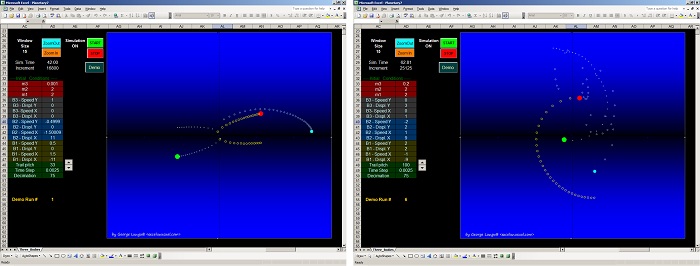Hi guys, here is the second part of a tutorial describing the matematical equations used in modeling a three-pendulum harmonograph (automatic drawing machine). It pertains to the second version of the model. This section describes the kinematic equations involved in the articulated linkage mechanism on the top of the table, the custom spreadsheet functions used in the model and some overall… Read More... "Modeling a Three-Pendulum Harmonograph – tutorial: part #2"













